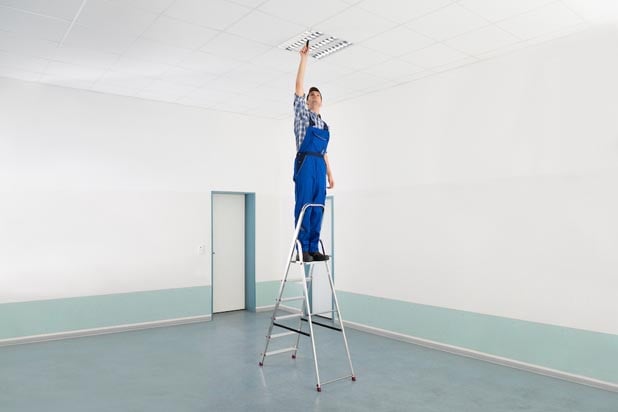
As simple as it might seem, it's just not easy to maintain lighting.
Millions of Americans experience the unpredictability of lighting maintenance every year around the
Unfortunately, such headaches aren't exclusive to Christmas decorators. They happen in the professional lighting world year-round.
To make things even more challenging, lighting is getting more complex, and it is becoming increasingly difficult to maintain the consistency of commercial spaces.
Below are a few of the snags that contribute to lighting maintenance challenges:
Wrong product?
One fairly obvious reason your lights could frequently go out: short-life lighting products. If you were trying to avoid a heavy upfront investment and opted for lower-priced lighting with shorter life ratings, you’re probably starting to experience frequent outages.
Furthermore, when products are misused –– paired with a bad ballast or used improperly in the application –– it can result in reduced lifespans.
Missing or wrong materials onsite?
All too often, the lighting technician does not have the appropriate materials to replace all of the outages. This may happen for a variety of reasons:
-
A technician does not know the part number of what needs to be replaced prior to their visit.
-
A store may have ordered the wrong part number of what needs to be replaced.
-
A store may have changed the lamp types used but forgets to remove the old inventory.
- Problems may appear to be one thing and turn out to be another. In the case of an outage of a lamp which requires a ballast, it may not be that the lamp has burned out, but that the ballast is faulty.
These issues create a ripple effect which postpones maintenance and may result in an increase of outages.
Electrical issues
Sometimes, even when the correct products are used and long-life products are in place, outages can still occur frequently. That could be due to larger electrical issues plaguing the overall electric system. It’s not all that uncommon to see large-scale systemic problems that interfere with lighting performance.
Bad scheduling??
Just as ordering details can be lost in translation, particularities in scheduling go unstated from time to time. This can lead to maintenance crews showing up at inconvenient times –– periods when work cannot be performed. And this goes without saying, but when previously scheduled maintenance gets postponed, the lighting gets neglected.
Bad luck
Lastly, you may have simply dealt a bad hand of cards. Murphy’s Law –– “what can go wrong, will go wrong” –– kicks in and lighting maintenance crews get stuck in unexpectedly bad traffic, product arrives broken or faulty, the technician finishes his work and the very next day another handful of lights go out, or some other crisis occurs and outages crop up. ?
The above are just a few of the issues that make it pretty easy to understand why lighting maintenance so often goes wrong.
But we’ve been in this business long enough to know the importance of keeping light levels high and outages at bay, so we’re committed to winning the uphill battle. We are continually evaluating our processes and labor providers so we can best avoid run-ins with instances of the above.
Solving for lighting maintenance issues with proactivity
Any car owner would tell you that maintenance tends to be most expensive and inconvenient when it’s reactive. Further, most would probably tell you that things fail –– brakes wear out, tires puncture, alternators die, etc. –– at the worst possible time.
The same goes for a reactive approach to lighting maintenance.
Proactive, or preventative, maintenance, on the other hand, allows for spaces to stay well-lit and sharp-looking. Here are three best practices that we recommend for implementing a successful preventative maintenance program:
1. Keep product stocked??
The best way to improve the chances of one-call resolution on a maintenance request –– the holy grail of lighting maintenance –– is to stock common products at each location. A good lighting maintenance provider should recommend commonly used products that will set their technicians up for success. While this won’t result in 100 percent of maintenance calls being resolved in a single visit, our clients that implement this proactive step are almost always pleased. This is also a step that you can take regardless of whether your lighting maintenance program is on-call or scheduled.
2. Attention to detail
Lighting maintenance involves managing an enormous number of variables –– from
3. Consider a re-lamp or retrofit
This may seem like a cop-out answer, but the reality is that the right product in the right application will most likely result in less maintenance. If you can move to more efficient, easier to maintain products, you will reap the benefits in reduced maintenance costs, reduced energy costs, and more consistent visuals across your organization.
Maintaining your lighting doesn't have to be as frustrating as hanging strands of Christmas lights. That's what we're here for –– to keep your lights on and the headaches away.
















